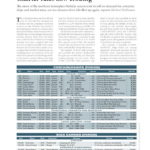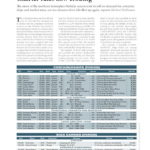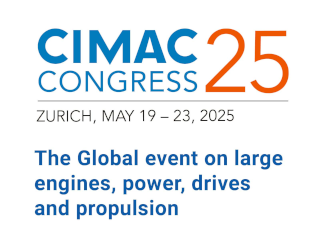The onset of the northern hemisphere holiday season took its toll on demand for container ships and market rates, service closures drive idle fleet up again, reports Michael Hollmann
The writing has been on the wall, but now it’s a fact that the sustained rise in charter rates for[ds_preview] container vessels has come to an end. Whether the market is just pausing for breath as it always does during the holiday-related summer lull or whether this is a true change of direction, remains obscure. Rates have not fallen over a cliff, but the slowdown in tonnage demand since June coupled with fears over the escalation of tariffs in the trades between the US and China and to a lesser degree between the US and Europe are weighing down on sentiment. Even the staunchest optimists are doubting whether the charter market will see new high benchmarks during the second half of the year. For the first time in many months, the New ConTex is now down month-on-month by ca. 2.3% while the Howe Robinson Containership Index even fell by 3.4% in the period between 20 June and 18 July.
The idle fleet monitored by Alphaliner – probably the best indicator of global container fleet utilisation – continued to edge up, reaching 315,175 TEU or 1.4% of total fleet capacity as per 9 July. The number of units idle increased to 122, with 98 of them controlled by tramp shipowners.
The number of those ships prompt/spot available for charter employment has gone up considerably, too, thus generating pressure on rate levels. Only in the 4,250 TEU baby panamax segment, 8 vessels were available at short notice (14 days forward), most of them in Asia, during the middle of July, according to one estimate. Spot supply has also been on the rise in the gearless 2,700/2,800TEU sector, the 1,700 TEU and the 1,000-1,200 TEU sectors. One UK broker estimated that spot/prompt supply across all segments soared from 13 in April to 60 units in mid-July.
This includes a handful of 8,000-10,000 TEU ships which are causing significant downward pressure in this relatively small, illiquid segment. Expectations have been undermined by the prospect of a trade war which would hit one of the most important trading routes for such vessels: the transpacific. Due to lower-than-expected trade growth and depressed freight rates, container lines have announced the closure of three Far East/US West Coast services within three weeks. Plenty of ships are likely to join the idle fleet over the coming weeks, undermining employment opportunities for all others. Against this background, fixing levels showed a material decline in some cases already, with CMA CGM hiring Hyundai 8000 type »Conti Makalu« (8,189TEU) for a short flexible period at 15,900 $/day which is over 2,500 $ less than what a sister vessel fixed some weeks earlier. Modern 7,000 TEU wide-beams did not remain unfazed by the growing imbalance in the larger size sector, too, as illustrated by the short-term extension of the 2015-built 6,882 TEU »Cape Chronos« by Ocean Network Express at 20,000 $/day – down from mid-20,000’s during the peak three months ago.
The conventional panamax segment had to make sacrifices as well. Rate levels only saw moderate adjustments down to high 12,000’s/low 13,000’s $/day for baby panamaxes and to 13,500-14,000 $/day for maxi-panamaxes of ca. 5,000 TEU capacity. A few services operated with panamaxes have recently been phased out but on the other hand there is still enough fresh demand for vessels to avoid a major build-up of unfixed tonnage.
Gradual rate declines were also registered for the handy/feeder classes below 3,000 TEU. Gearless 2,700/2,800 TEU ships – arguably one of the strongest segments since last year – were seen fixing at levels below 12,000 $/day east of Suez for the first time after a few more spot vessels emerged on the scene. By contrast, rates for geared 2,500 TEU vessels held up at levels above 12,000 $/day – at least in the Atlantic where operators are apparently faced with a shortage of vessels. Activity in the 1,700 TEU and smaller feeder classes lost momentum as well, with lower benchmarks only emerging slowly, though, due to limited activity. One gearless Wenchong 1700 TEU ship agreed just 9,500 $/day in Asia while a geared unit still achieved 10,500 $/day which was basically in line with last done. For vessels of 1,100 TEU and smaller, the market turned very quiet both in Europe and the Mediterranean and in Asia. Still, rate levels seem relatively robust, with a CV1100 fixing a short flexible period at 8,300 $/day in the Mediterranean while 700TEU tonnage got fixed at fairly stable levels of 5,450 $/day for medium period duration in Asia.
Dry bulk market trending firmer
By comparison, the dry bulk spot market continued to push higher defying seasonal patterns, with the BDI up almost 21% month-on-month. The increase was driven mainly by capesize tonnage which benefitted from a recovery in iron ore liftings both in the Pacific and ex Brazil over the past months.
Tonnage shortages on capes in the North Atlantic led to some cargo stem splitting and thus extra demand for panamax bulkers. This in combination with increased fixing activity in the Atlantic, for example for coal ex Murmansk and Baltic Sea ports to the ARA range or the Mediterranean, served to ratchet up panamax rates as well. Smaller geared bulkers were left behind, despite positive signals in some areas such as the Black Sea where the new grain harvest is coming up for export. Average rates for supramaxes and handysize bulkers from time charter trip business declined by 6.0 and 5.0%, respectively, since mid-June.
Michael Hollmann

















